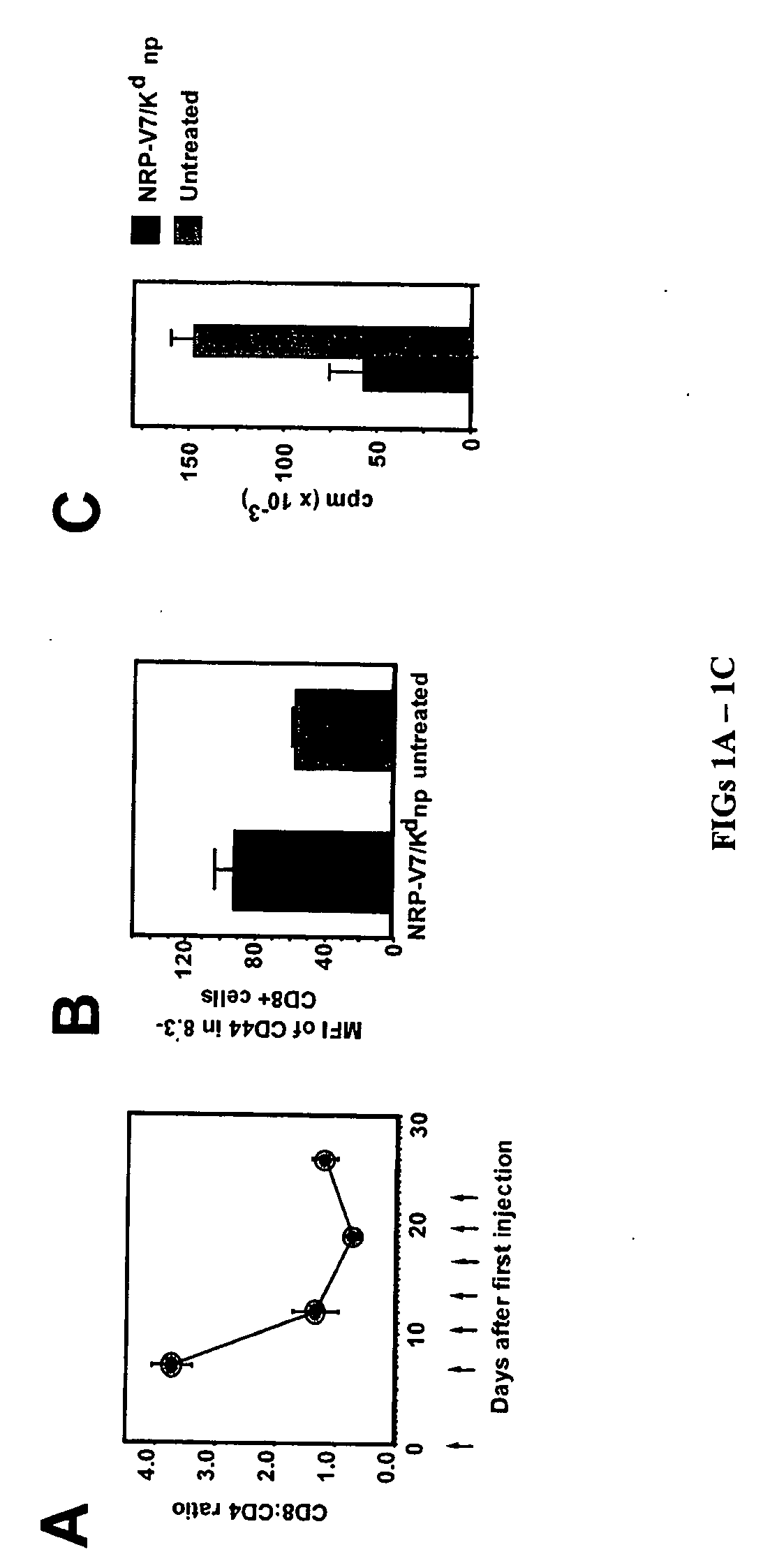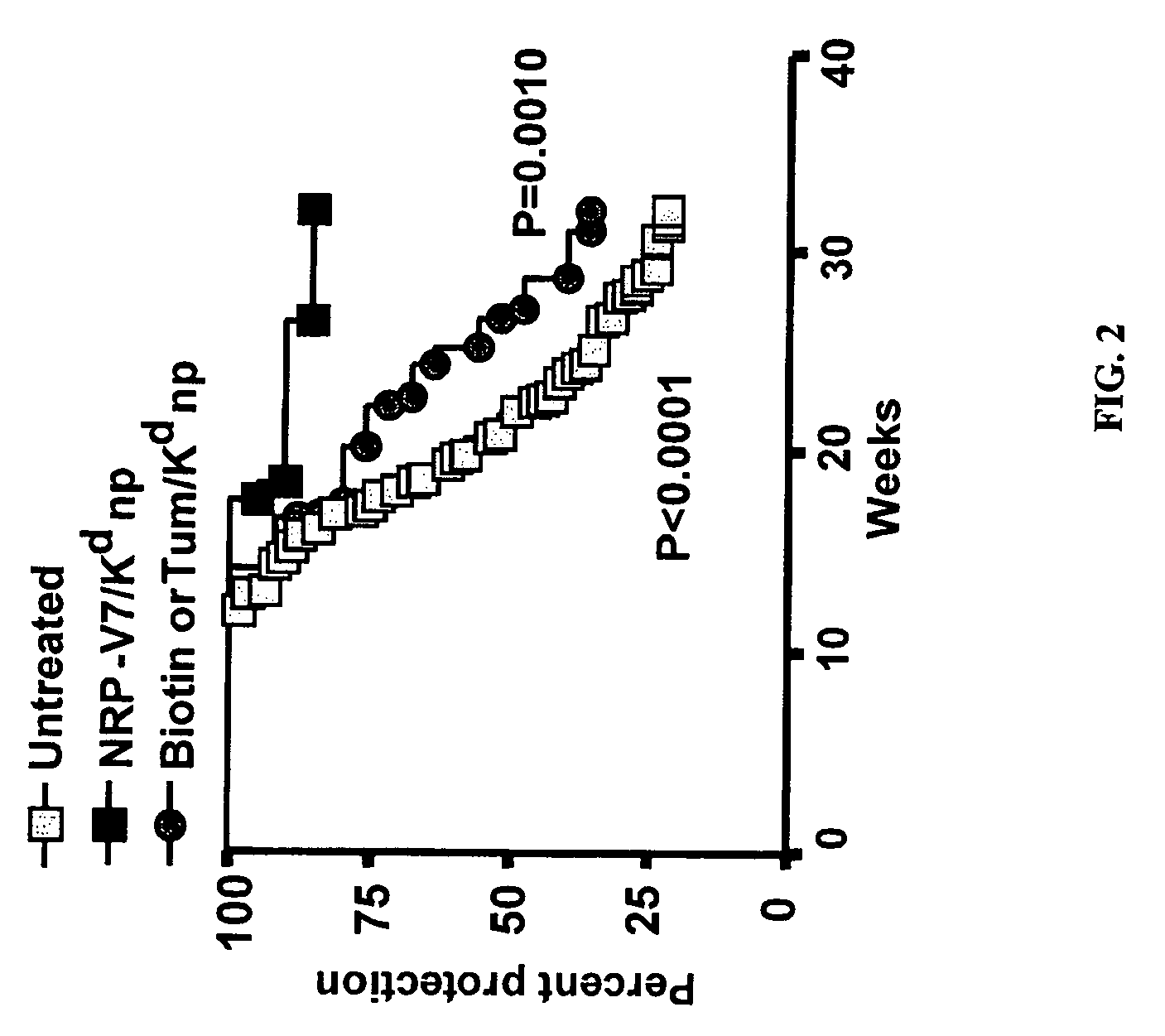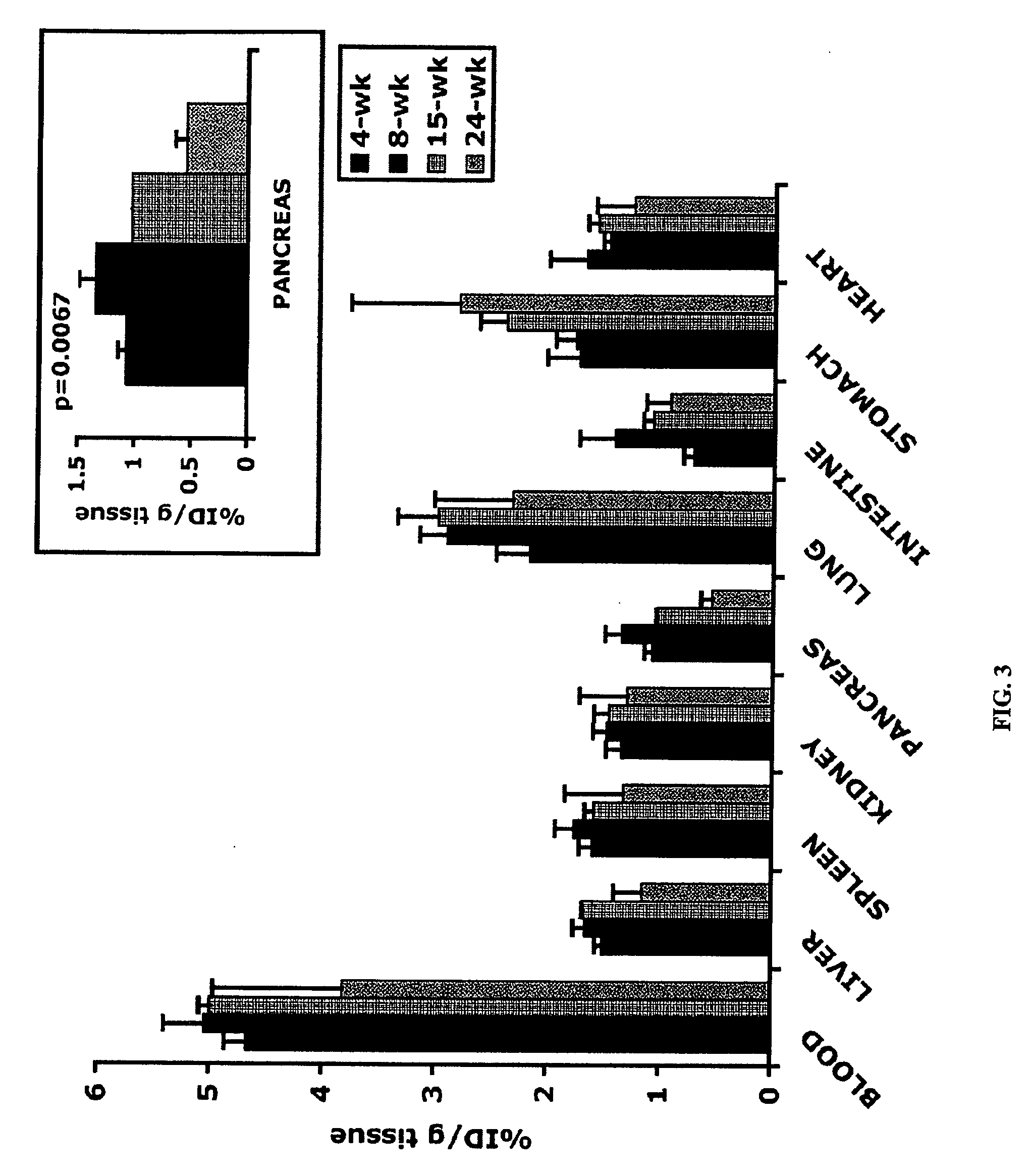Compositions and methods for the prevention and treatment of autoimmune conditions
a technology for autoimmune conditions and compositions, applied in the field of immunology and medicine, can solve problems such as the difficulty of treating patients with peptides
- Summary
- Abstract
- Description
- Claims
- Application Information
AI Technical Summary
Benefits of technology
Problems solved by technology
Method used
Image
Examples
example 1
T1D Protection by Treatment with Peptide / MHC-Coated Nanoparticles
[0177]Diabetes protection by treatment with super-paramagnetic nanoparticles coated with NRP-V7 / Kd monomers. To study whether NRP-V7 / Kd-coated nanoparticles are tolerogenic in vivo, 8.3-TCR-transgenic NOD mice were treated (also referred to as 8.3-NOD or Vα17.4+TCR-TG mice further below) with several i.v. injections of a small volume of particles (5 μl, carrying 0.6 μg of NRP-V7, once every 3 days). The transgenic high-avidity IGRP206-214-reactive splenic CD8+ T-cell pools of these mice were significantly depleted in three doses (the splenic CD8:CD4 ratios dropped from ˜4 to ˜1) (FIG. 1A). The few non-deleted CD8+ T-cells showed signs of prior activation as determined by assessing CD44 expression (FIG. 1B) and were hyporesponsive to antigenic stimulation in vitro, suggesting that they had been anergized by the treatment (FIG. 1C).
[0178]To study the effectiveness of ‘multiplexing’, paramagnetic beads (referred herein to...
example 2
Testing the Ability of Iron Oxide Nanoparticles Coated with Human Type 1 Diabetes-Relevant Peptide / HLA Complexes to Restore Normoglycemia
[0201]“Humanized” mice expressing HLA transgenes and peptide / HLA complexes available for the proposed studies. As mentioned above, peptides derived from insulin and IGRP are primary targets of CD8+ T cells in wild-type NOD mice. Assessment of human MHC molecules (Human Leukocyte Antigens, HLA) presented peptides derived from these two autoantigens during diabetogenesis is being investigated in ‘humanized’ HLA-transgenic NOD mice. Studies focused initially on HLAA*0201, a MHC molecule that is expressed by nearly 50% of certain ethnic groups. This study employs the strain designated NOD.β2 mnull.HHD, which lacks the murine β2 macroglobulin gene and expresses the chimeric monochain construct HHD (Pascolo et al., 1997). This construct encodes human β2m covalently linked to the α1 and α2 domains of human HLA-A*0201, and the α3, transmembrane, and cytopl...
PUM
| Property | Measurement | Unit |
|---|---|---|
| thickness | aaaaa | aaaaa |
| diameter | aaaaa | aaaaa |
| diameter | aaaaa | aaaaa |
Abstract
Description
Claims
Application Information
 Login to View More
Login to View More - R&D
- Intellectual Property
- Life Sciences
- Materials
- Tech Scout
- Unparalleled Data Quality
- Higher Quality Content
- 60% Fewer Hallucinations
Browse by: Latest US Patents, China's latest patents, Technical Efficacy Thesaurus, Application Domain, Technology Topic, Popular Technical Reports.
© 2025 PatSnap. All rights reserved.Legal|Privacy policy|Modern Slavery Act Transparency Statement|Sitemap|About US| Contact US: help@patsnap.com



